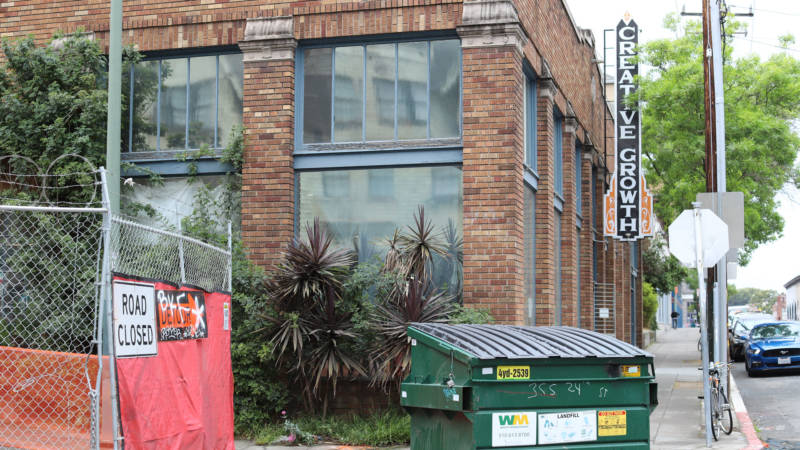On Wednesday, April 24, Matt Dostal was working at Creative Growth, the Oakland art studio and gallery for people with disabilities, when a supervisor from the adjacent construction site visited to say the sidewalk and planters alongside the building would be demolished on Monday.
Dostal, the nonprofit’s studio manager, was incensed. He helped hand-lay the brick planters six years ago, and said the succulent garden provides therapeutic respite for Creative Growth artist-clients, many of whom sweep or relax in the rustic outcrop. Suddenly, it was to be destroyed within days.
“This was put to me as if they’re doing us a favor with the new sidewalk,” Dostal said.
The news prompted Creative Growth’s executive director, Elizabeth Brodersen, to write the contractor for Trammell Crow Residential, which is developing the six-story, 234-unit Alexan Webster apartment building next door, and say that the organization was prepared to take legal action.
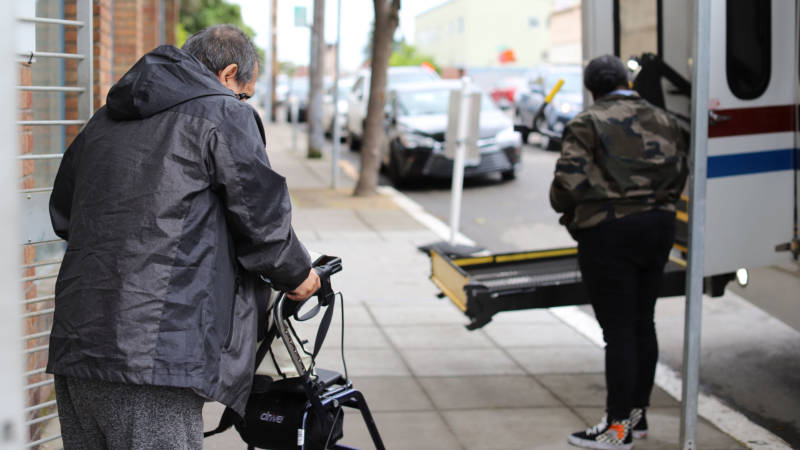
The builder’s superintendent replied to Brodersen that the planter was actually slated to remain, saying in an email that there “must be some confusion” and apologizing for knowing “very little about Creative Growth other than it is an art studio[.]”
To Dostal and Creative Growth leadership, it was only the latest example of developers so eager to remake the neighborhood that they’re trampling what’s already there. They say construction has damaged the building, caused interior flooding, disrupted public programming and reduced accessibility for disabled clients.
“We serve a vulnerable population whose voices and needs are often marginalized,” said Brodersen, the organization’s executive director since February. “We want respect and communication for the sake of the people who come to make art in a safe haven.”
“Of course there’s been the building damage, the wear and tear,” said Jane Timberlake, president of the board of directors. “But now that it’s affecting our artists, we really need to draw the line.”
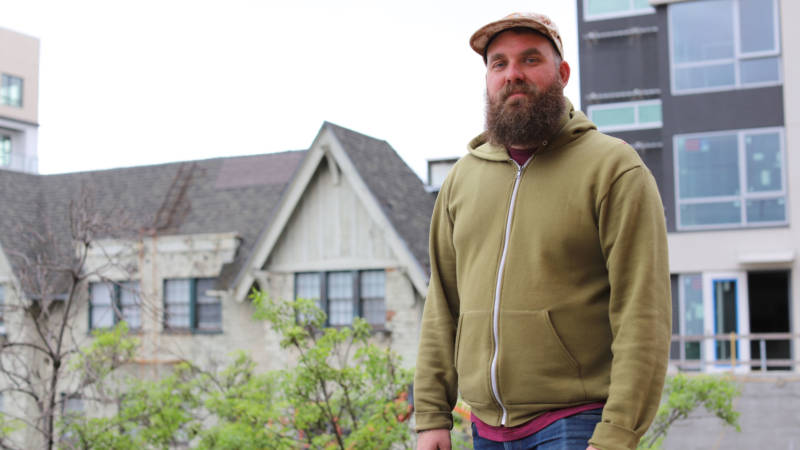
Noise, Flooding and Closures
Founded in 1974 and in its current location since 1980, Creative Growth has played a critical role in promoting artwork by people with disabilities, courting collectors and acclaim for artists such as William Tyler and Judith Scott. (In a 2015 feature story, the New York Times reported on the center’s “startling track record.”) The nonprofit has repeatedly rejected offers to buy its two-story building, and today stands as one of the largest arts organizations in Oakland.
Now, within a square block of the center at 24th & Valdez streets, which serves roughly 100 people daily, more than 1,000 housing units are under construction in the newly dubbed “Broadway-Valdez District.” As a result, according to leadership, building damage has caused flooding, and its roof is being used for construction staging without permission.
Unexpected street closures also impact the dozens of East Bay Paratransit buses bringing developmentally and physically disabled artists to Creative Growth, and construction and utilities vehicles often block the loading zone. Due to the obstacles, the gallery ceased public openings during First Friday, the popular art walk and street fair, and foot traffic has declined overall.
Pete Salsman, a multimedia artist who comes to Creative Growth five days a week via East Bay Paratransit, said he’s noticed the construction disturb his peers. “The smell, the dust, the noise—I take these things out,” he said, pointing to his hearing aids, “and I can still feel the vibrations.”
Salsman added of the nearby construction, “I’d like to move into one of the apartments, but $2,700 is out of my price range.”
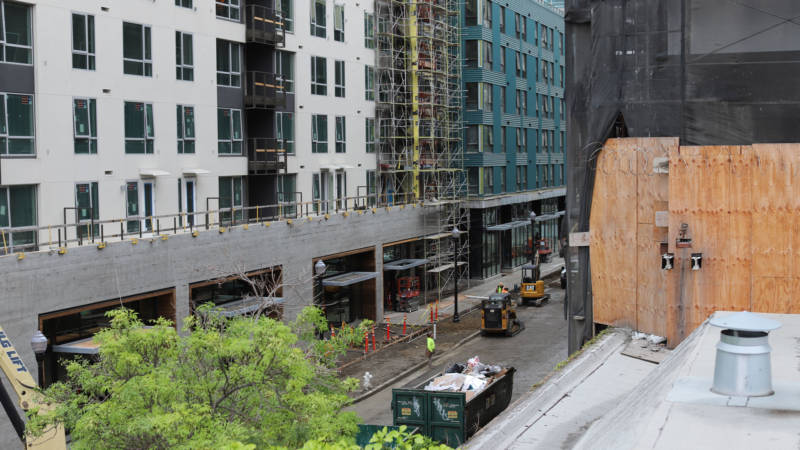
Interrupting Routine
According to Dostal, the developers and contractors operating nearby don’t appreciate the sensitivity of Creative Growth’s clientele. People with developmental disabilities thrive on structure and support. Lately, though, there’s less consistency to paratransit comings and goings, let alone whether or not a sidewalk will be navigable by someone in a wheelchair.
Dostal said that for someone with a seizure disorder, for example, the frequent jackhammering is more than a nuisance—it’s dangerous. (Staff often hand out earplugs.) And he’s rarely notified of construction activity. “If you’re stressed out, you’re more likely to lash out at the artist next to you, and it starts to erode the really important sense of community here,” he added.
One afternoon recently, Valdez Street was closed entirely, and 24th Street was closed to eastbound traffic. The day before, Dostal recalled, the driver of a construction vehicle idling in Creative Growth’s loading zone wouldn’t say what job site he was servicing. Once again, Dostal didn’t know where to complain. “I’m supposed to be managing the studio, not the curb,” he said.
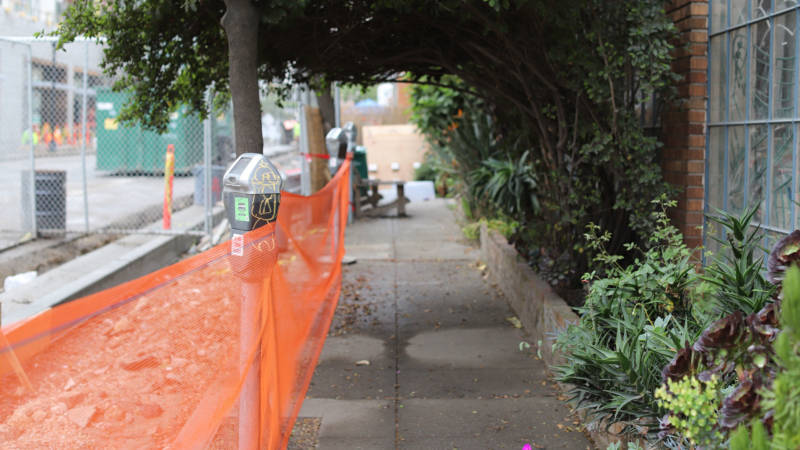
Diagonally across the intersection from Creative Growth is the seven-story, 255-unit Hanover Northgate, a nearly complete “luxury apartments” complex; and on the other side of Valdez St. is the six-story, 196-unit Alta Waverly, another nearly complete, self-described “luxury apartments” development. But the most disruptive project for Creative Growth has been the Alexan Webster.
During the excavation phase of construction for the Alexan Webster in 2017, cracks in the walls and concrete floors at Creative Growth spanned the length of the building. And then there was flooding so intense, the organization was forced to close for a day. Becki Couch-Alvarado, Creative Growth’s previous executive director, said Trammell Crow paid for the repairs and lost revenue, and credited the developer for its responsiveness.
But as the frame of the building rose, problems persisted. Debris from the job site clogged the rooftop gutters, resulting in more seepage. As recently as Wednesday, Creative Growth’s roof was being used to support construction materials, which Timberlake said the organization did not permit. Staff in the upstairs offices said they’ve heard contractors’ footsteps.
“So they’re basically walking all over us,” Timberlake said.
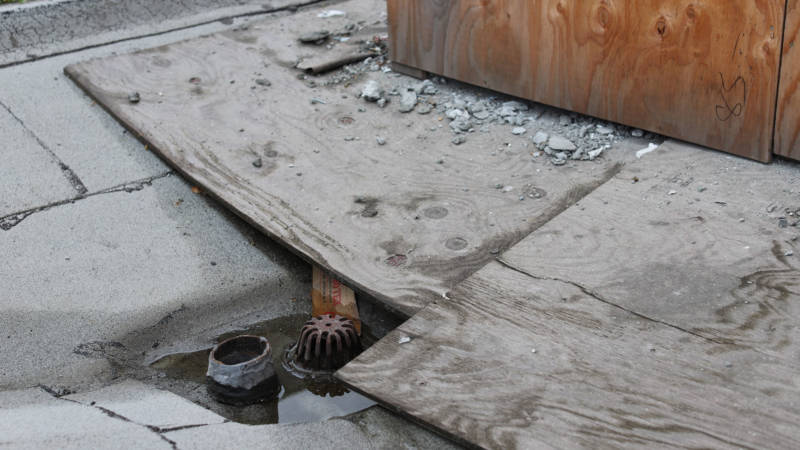
Acknowledging Disruption
In a statement, Trammell Crow contractor Suffolk Construction said workers are not authorized or instructed to use the roof, and that the plywood is protective. The developer also said it earlier discussed the scaffolding with Creative Growth leadership.
Bruce Dorfman, senior managing director with Trammell Crow, said in a statement that the developer has worked closely with Creative Growth, for example by acquiring artwork for the incoming apartments and taking responsibility for earlier building damage.
